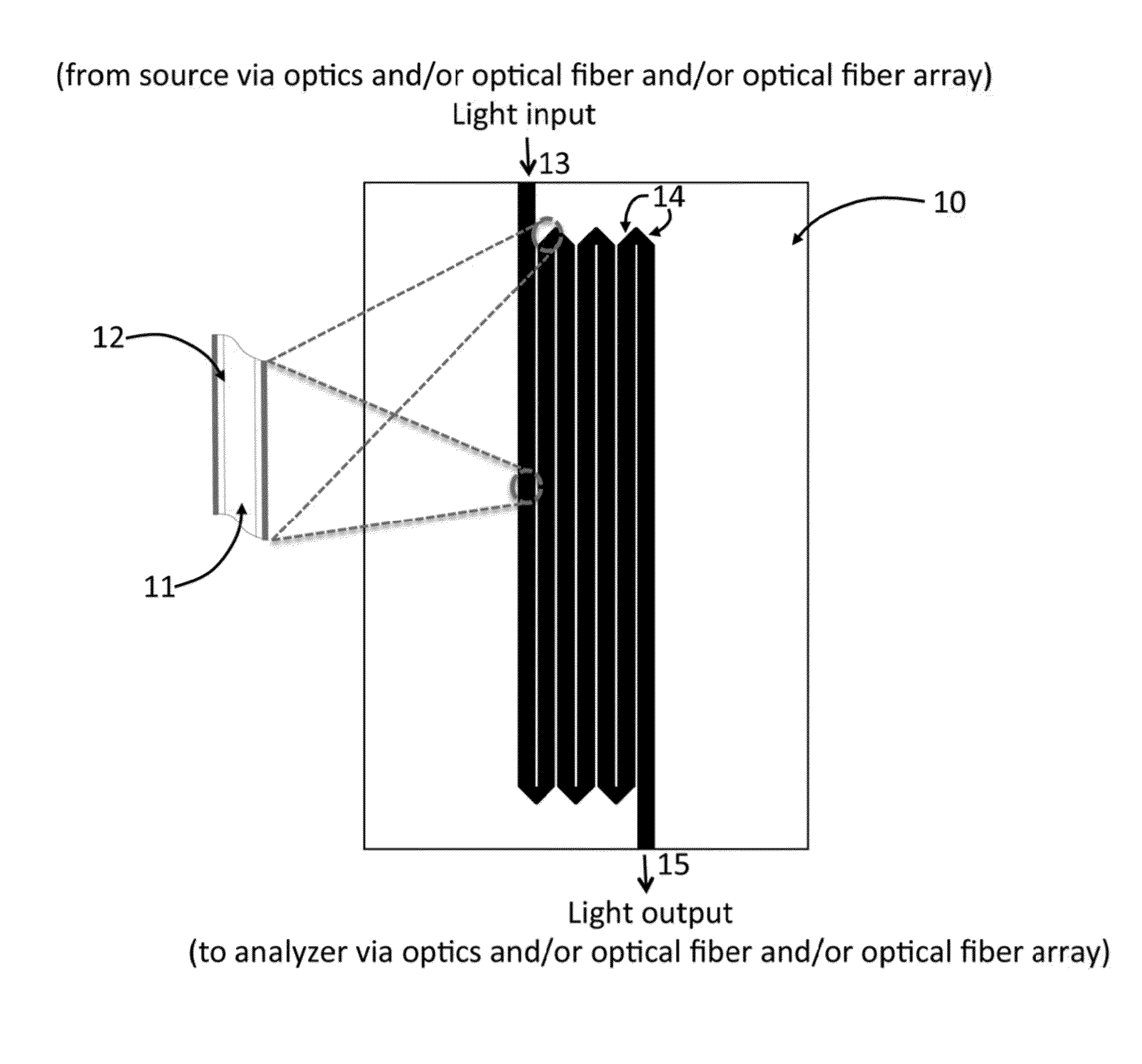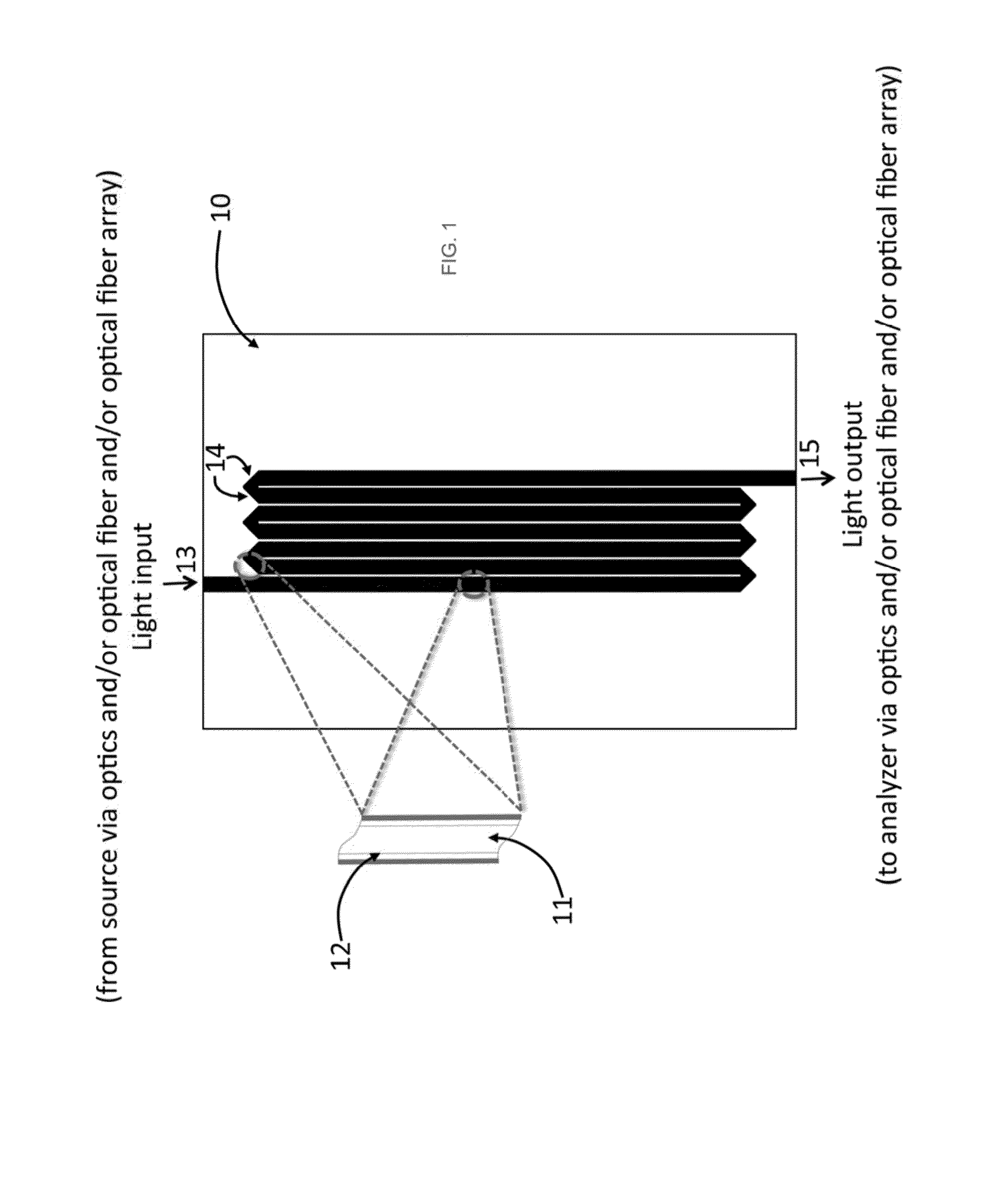Substrate-Integrated Hollow Waveguide Sensors
a sensor and substrate technology, applied in the field of hollow waveguide sensors, can solve the problems of large operational footprint, limited practical use of conventional hollow waveguides, and inability to integrate into sensing devices,
- Summary
- Abstract
- Description
- Claims
- Application Information
AI Technical Summary
Benefits of technology
Problems solved by technology
Method used
Image
Examples
Embodiment Construction
Glossary
[0038]The following terms are intended to have the following general meanings as they are used herein:
[0039]Meandering hollow waveguide for meandering waveguide): Refers to either, substrate-integrated channels or via meandering (e.g., circuitous, curved or in any way, shape or form folded optical paths) waveguide sensor designs.
[0040]Light: energy which may be selectively applied including energy having a wavelength between 2×10−7 and 1×10−1 meters including for example, deep ultraviolet radiation, ultraviolet radiation, visible radiation, near infrared radiation, mid infrared radiation, and far infrared radiation.
[0041]Source: Refers to devices that produce coherent and / or incoherent light Examples include, but are not limited to, lasers (e.g., quantum cascade, gas, solid state, fiber), globars, diodes, and SiC filaments.
[0042]Analyzer: Refers to a single device or combination of devices that provide wavelength and / or frequency selection and detection. Examples of waveleng...
PUM
 Login to View More
Login to View More Abstract
Description
Claims
Application Information
 Login to View More
Login to View More - R&D
- Intellectual Property
- Life Sciences
- Materials
- Tech Scout
- Unparalleled Data Quality
- Higher Quality Content
- 60% Fewer Hallucinations
Browse by: Latest US Patents, China's latest patents, Technical Efficacy Thesaurus, Application Domain, Technology Topic, Popular Technical Reports.
© 2025 PatSnap. All rights reserved.Legal|Privacy policy|Modern Slavery Act Transparency Statement|Sitemap|About US| Contact US: help@patsnap.com



